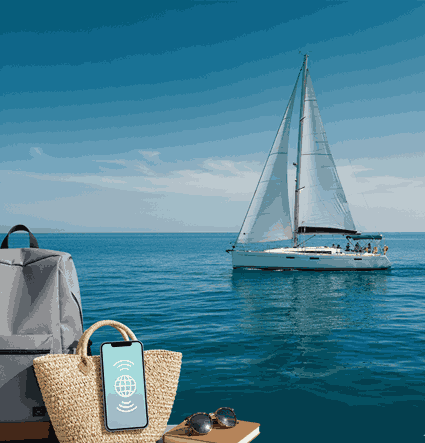Most people think the Red Sea resorts are limited to Sharm el-Sheikh and Hurghada. They’re wrong. Marsa Alam, which sits some 300km south of Hurghada, is where the real Red Sea begins.
- Where is Marsa Alam?
- Why you should go to Marsa Alam
- Know before you go to Marsa Alam
- Top things to do in Marsa Alam
- World-class Diving
- Snorkeling with dugongs and turtles
- Swimming with dolphins
- Debunking the meteorite myth
- Visiting Wadi el Gemal
- Discovering Emerald Mines
- Exploring the Paradise Beach of Ras Hankorab (Sharm el Luli)
- Kitesurfing
- Taking a boat trip to Qulaan Islands
- The Dugong Reality: Abu Dabbab Decoded
- Tip
- What dugong encounters actually look like
- The Green Turtle Phenomenon
- The morning turtle routine
- Hawksbill vs Green identification
- Elphinstone: The Shark Reality Check
- The Northern Sites: Where Locals Go
- Accommodation Strategy: Location Matters
- Diving Operators: The Real Differences
- Seasonal Patterns That Matter
- Food and Culture: Beyond Resort Buffets
- What Changes Everything
- Read more
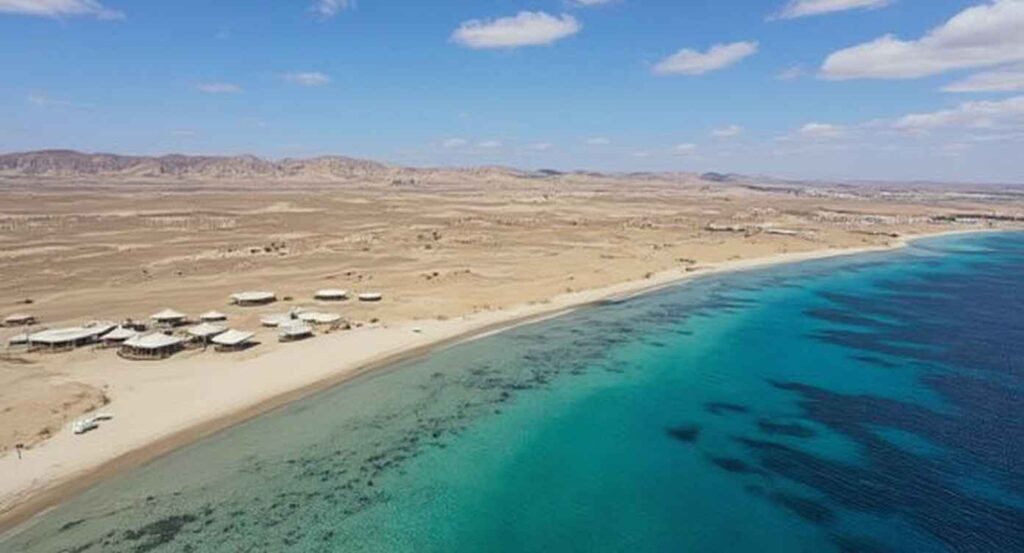
Marsa Alam was once a remote fishing village on Egypt’s southern Red Sea coast. It’s still a hidden gem of Egypt, slowly gaining popularity.
Where is Marsa Alam?
Located roughly 730 km south of Cairo, “Marsa Alam” usually refers not just to the town but to a 200-km stretch of pristine coastline between El Quseir in the north and Wadi El Gemal National Park in the south. But you don’t need to travel this far from Cairo by train or highway, since Marsa Alam has its own international airport (RMF).
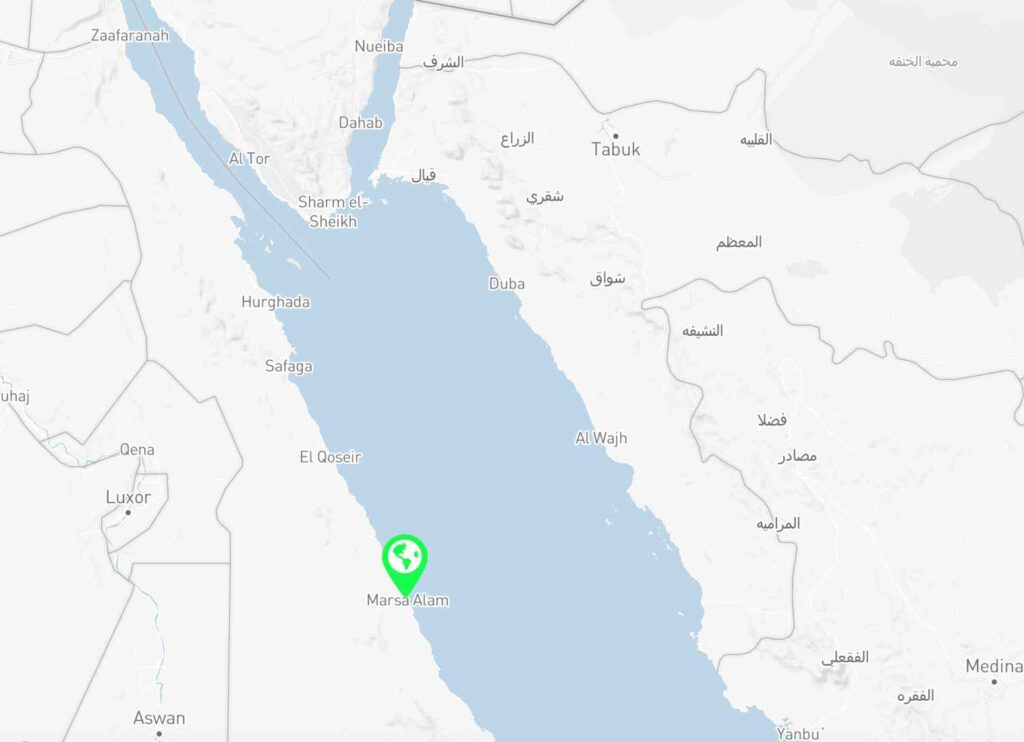
It accepts flights from all major European airports, as well as domestic ones from Cairo. Alternatively, you can land in Hurghada, and it will take you approximately 3 hours to drive to Marsa Alam.
Why you should go to Marsa Alam
Though gaining popularity, Marsa Alam is still not a mainstream Red Sea resort, which means fewer crowds, higher chances of wildlife encounters (dugongs and turtles), and remote, pristine beaches.
The unique locations are Wadi El Gemal National Park and nearby historic emerald mining sites, are one-of-a-kind reasons to visit Marsa Alam.
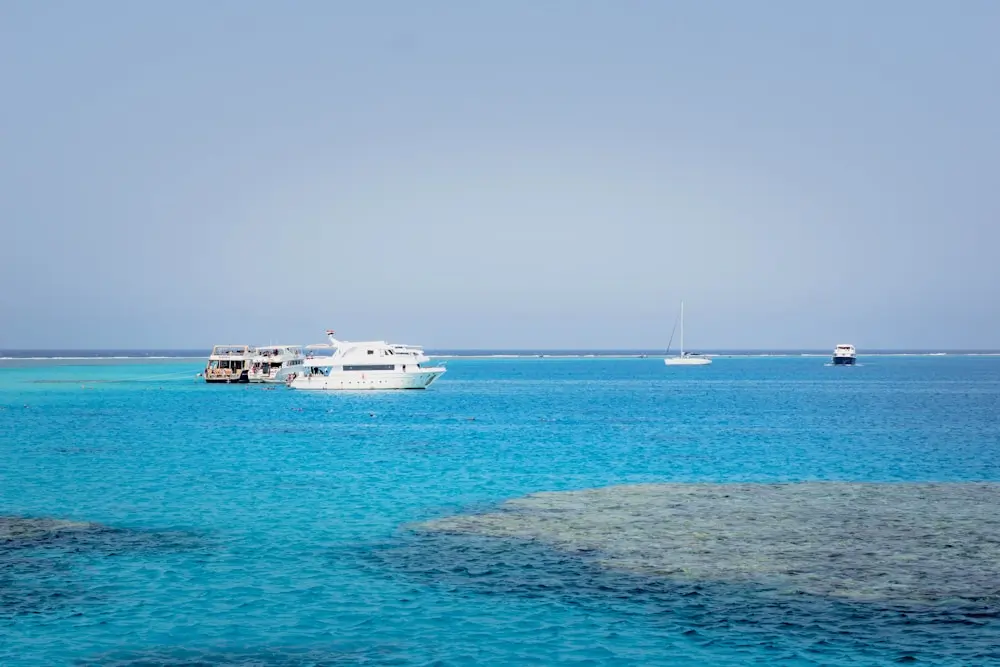
Know before you go to Marsa Alam
It gets very hot in summer in Egypt in general, and some people would avoid visiting Egypt during summer at all. But, as mentioned above, Marsa Alam is even further South than Hurghada and Sharm el-Sheikh, so picture even higher temps during the summer months, and even the water gets very hot.
When choosing where to stay, consider proximity to the activities you want: Port Ghalib (near the airport) is a lively marina area with shops and restaurants, a convenient base for boat trips. Abu Dabbab Bay and Coraya Bay have excellent resorts plus great snorkel/dive sites right offshore. Further south, staying near Hamata/Wadi Lahami puts you close to the Fury Shoals reefs and Qulaan islands.
Top things to do in Marsa Alam
As said above, nightlife and fine dining aren’t the reasons to visit Marsa Alam. But it should be top of the list for water sports: scuba diving, snorkeling, kitesurfing, you name it.
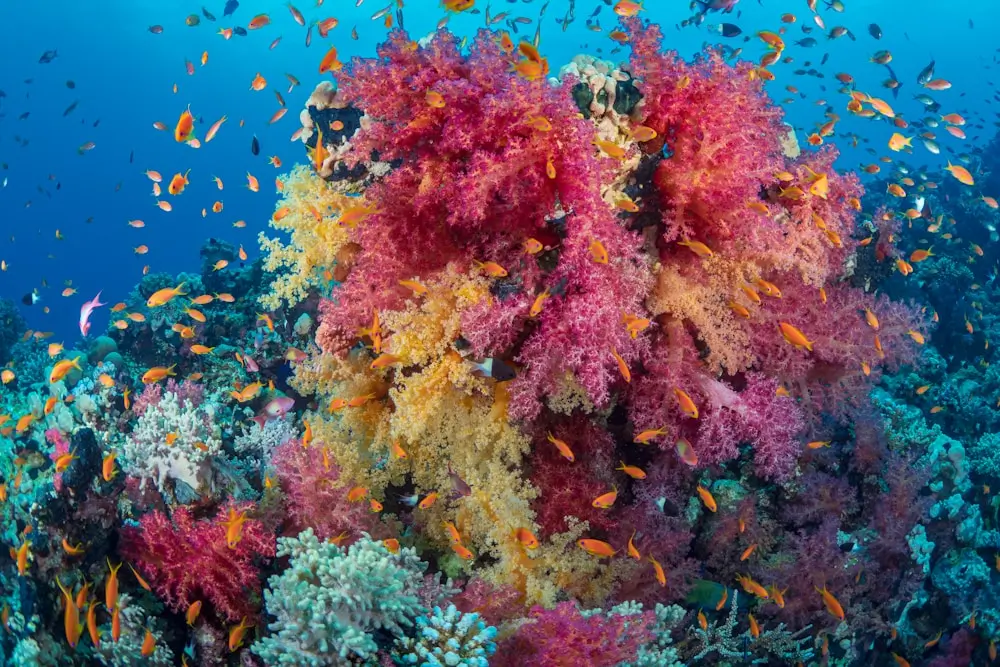
World-class Diving
The area offers both shore-accessible and offshore dive sites, with established dive centers providing training and guided trips.
One of the most recognized sites is Elphinstone Reef, located offshore and typically reached by a 30-minute boat ride. This site is known for its steep coral walls and frequent sightings of white-tip, gray, and oceanic whitetip sharks, especially between October and December.
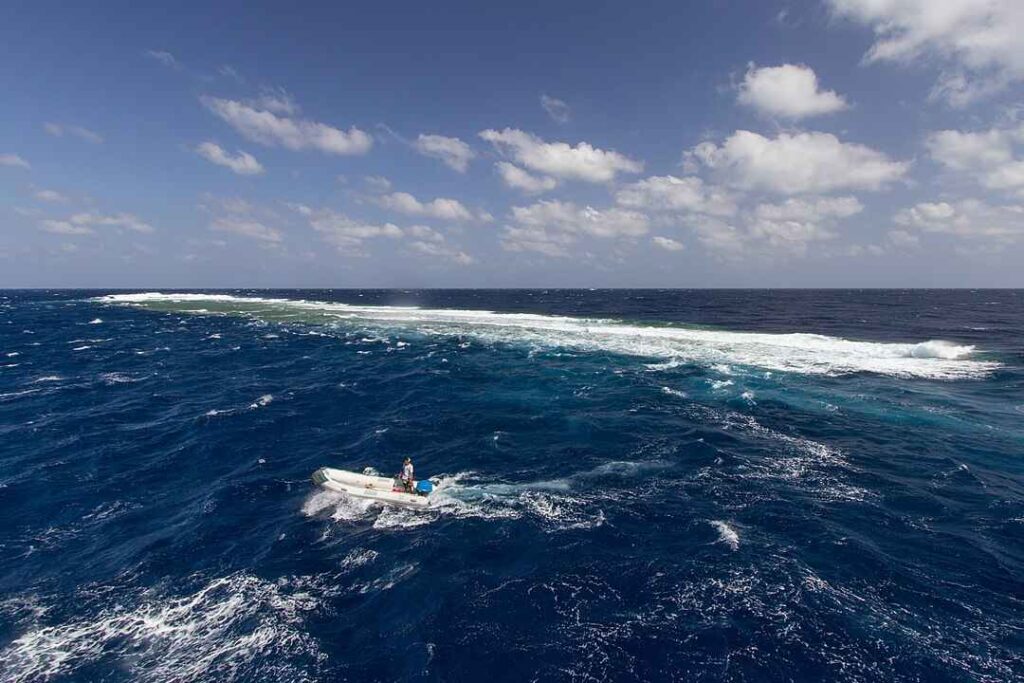
Liveaboard trips depart from Port Ghalib Marina. Common routes include the “Golden Triangle,” which covers Brothers Islands, Daedalus Reef, and Elphinstone, and requires advanced experience due to deep and exposed sites.
Other liveaboard destinations accessible from Marsa Alam include St. John’s Reef and Fury Shoals, which are suitable for intermediate divers. Additionally, there are day trips to local reefs such as Sha’ab Marsa Alam and Marsa Mubarak
Snorkeling with dugongs and turtles
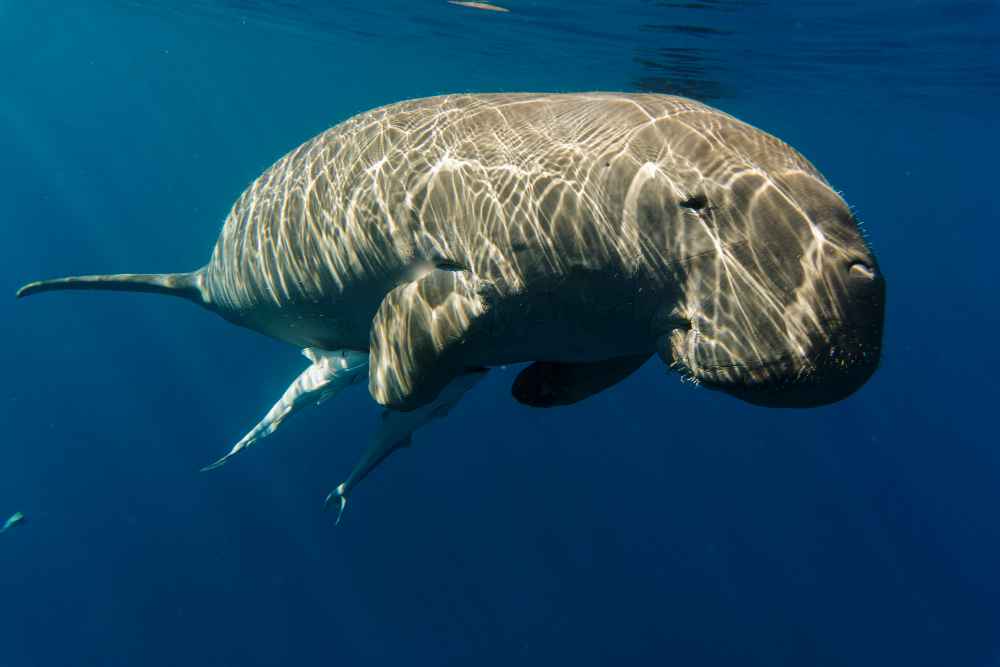
If sea turtles and dugongs (sea cows) are on your wishlist, don’t miss Marsa Abu Dabbab. This shallow bay with seagrass beds is famous for its resident population of green sea turtles and a couple of dugongs.
The plural for dugongs is the correct usage; there are 2 dugongs living in this area, and they even have names – Dennis and Dougal.
Another popular snorkel spot is Marsa Mubarak, near Port Ghalib, which also sometimes features dugong sightings and always has plenty of turtles (or so they say).
Swimming with dolphins
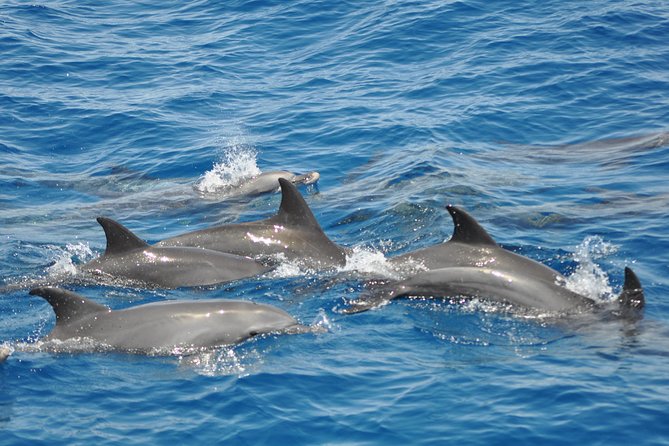
Sha’ab Samadai (Dolphin House) is a horseshoe-shaped reef lagoon near Marsa Alam that is regularly frequented by a resident pod of spinner dolphins. Tour boats typically reach the site in under an hour, most often departing in the morning when dolphins are present in the lagoon.
Another site known for its dolphin encounters is Sha’ab Sataya (Dolphin Reef), located further south and accessible by boat from Hamata, approximately 100 km from Marsa Alam. Sha’ab Sataya receives fewer visitors and is known for occasional large pods of dolphins in clear water.
Debunking the meteorite myth
Marsa Nayzak, often dubbed the “Meteor Pool” is not a traditional beach but rather a striking rock pool carved into the shore, rumored to have been formed by a meteor impact ages ago.
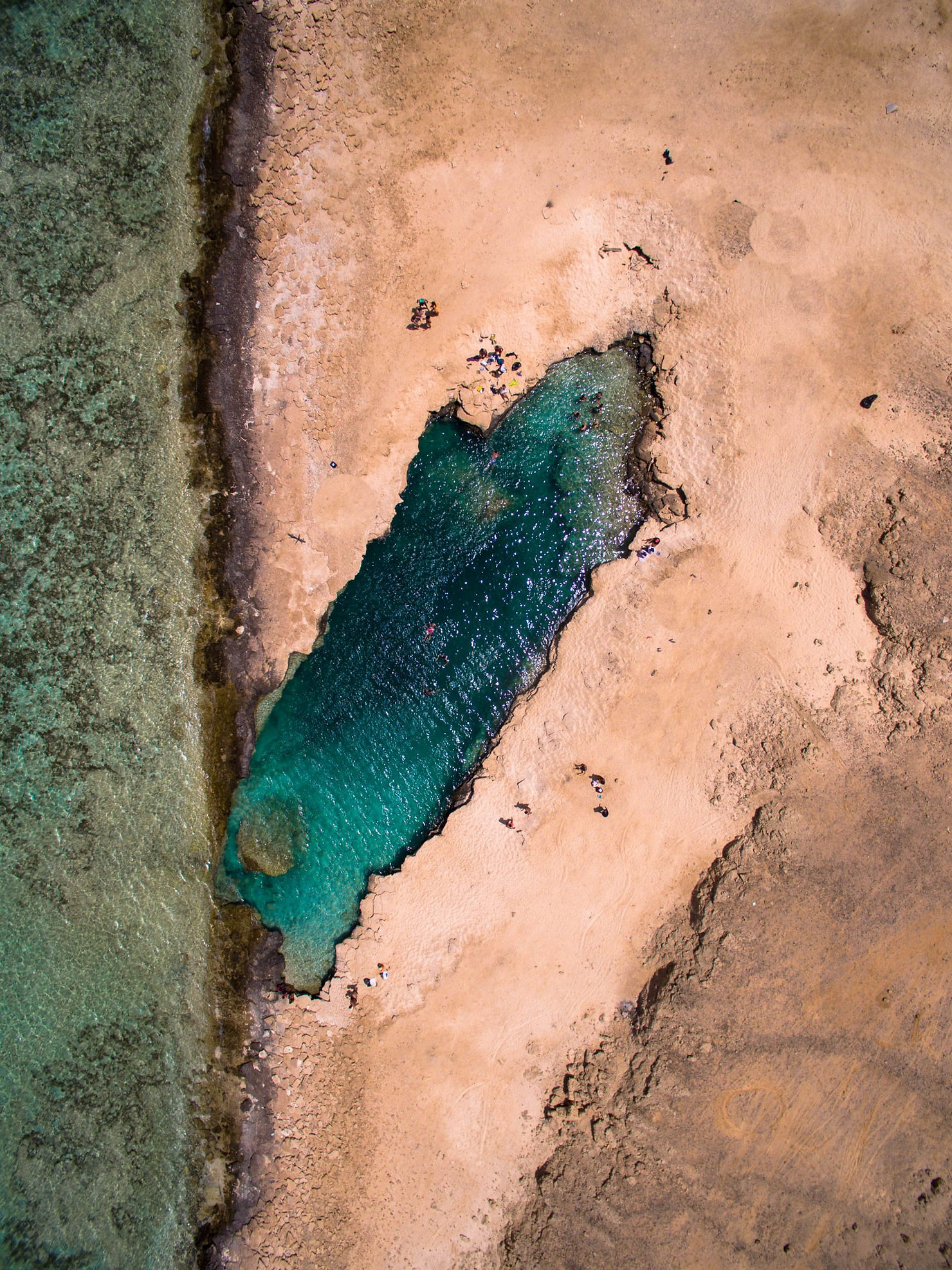
The result is an eye-shaped natural pool filled by the Red Sea. Marsa Nayzak is approximately 15 km south of Marsa Alam town, and although small in size, it makes for fantastic photos and a refreshing dip. Just exercise caution on the rocky edges.
Visiting Wadi el Gemal
Just inland from Marsa Alam, about a 1-hour drive, lies Wadi El Gemal National Park, a vast protected area that stretches from the mountains to the Red Sea. The name means “Valley of the Camels,” and you’ll find a mix of desert, rocky hills, coastal lagoons, and even mangrove islands inside the park.
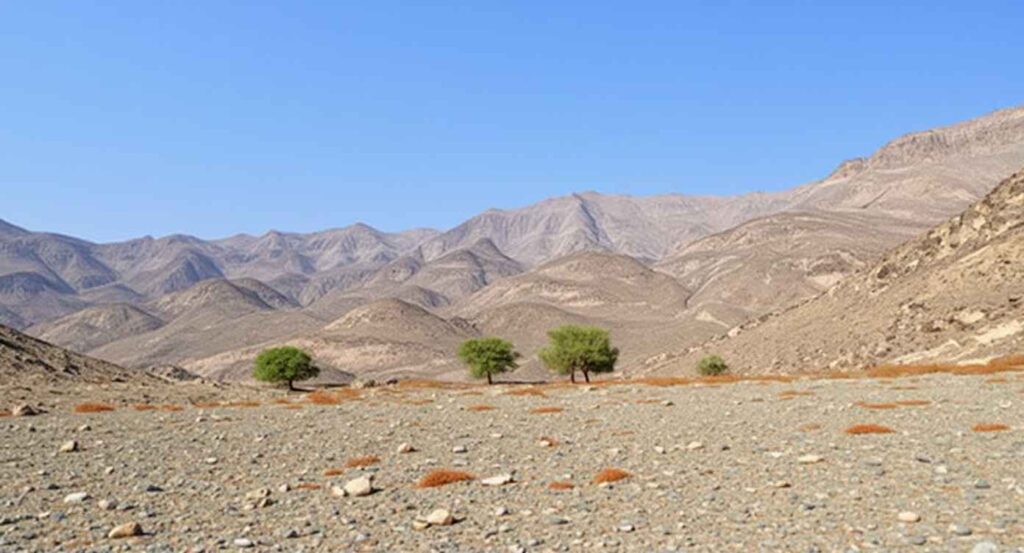
This region is home to local Bedouin communities and a range of wildlife, like Nubian ibex, gazelles, and desert foxes, though most animals are shy and not often seen. The park also features some rare species, including wild donkeys and sand cats.
Most people visit by joining a jeep or quad-bike tour that follows rough tracks across the sand and through the valleys. The scenery is quite varied, with stretches of open desert, rugged mountains, and clusters of acacia trees.
Discovering Emerald Mines
Inside Wadi el Gemal, you can still see the remains of the old Roman mining settlement Sikait, which they called Mons Smaragdus, meaning ‘Emerald Mountain’.
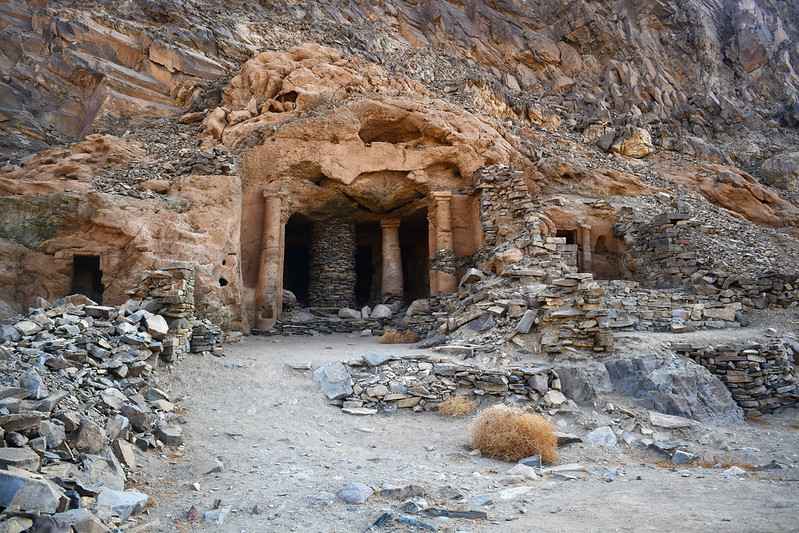
In fact, along the road between Marsa Alam and Edfu lies the Temple of Seti I at Kanais, a rock-cut shrine built by the pharaoh Seti I to commemorate his expeditions to these deserts. The temple’s inner chambers are closed to protect them, but you can view the entrance and the nearby ancient well and Roman fort ruins
Exploring the Paradise Beach of Ras Hankorab (Sharm el Luli)
One of the absolute must-visit spots is Sharm El Luli, also known as Ras Hankorab, as locals call it. This pristine white-sand beach, 60 km south of Marsa Alam town, looks like a postcard come to life. Imagine powdery sand and a lagoon of unreal brilliant blue, ringed by coral reefs at the edges.
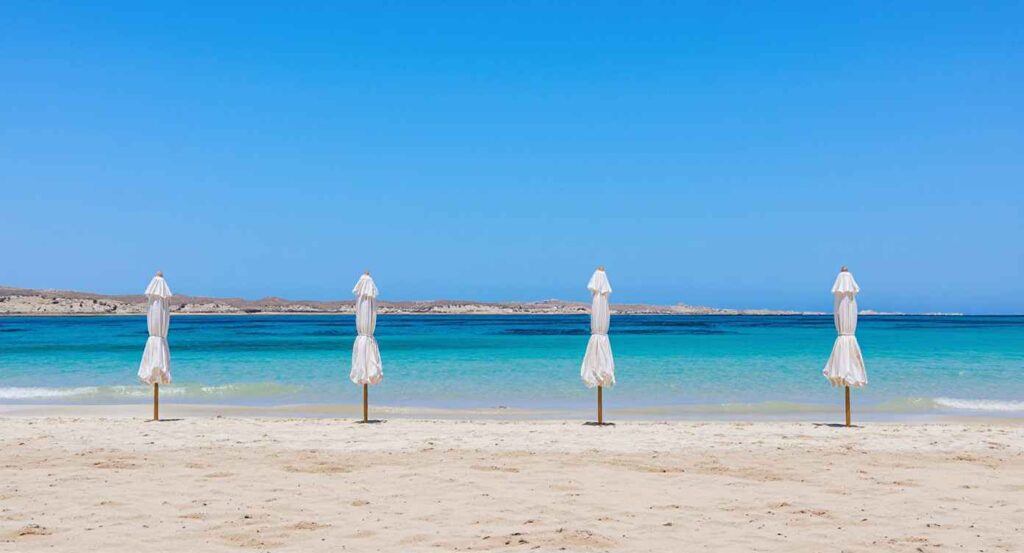
The beach is completely wild, meaning no infrastructure at all, no food stalls, no showers or bathrooms, no equipment rental, nothing.
Kitesurfing
Marsa Alam has become a notable destination for kitesurfing, with conditions that are well-suited for beginners and casual visitors. The coastline features several natural lagoons and bays where the sport is practiced, offering wide open spaces, shallow water, and consistent winds for much of the year.
Popular kitesurfing spots around Marsa Alam include the lagoon near Port Ghalib (often called the “Blue Lagoon”), El Naaba Bay (near Three Corners Equinox resort), and the more remote Wadi Lahami in the far south. These areas are favored for their sandy beaches and sheltered, flat-water lagoons.
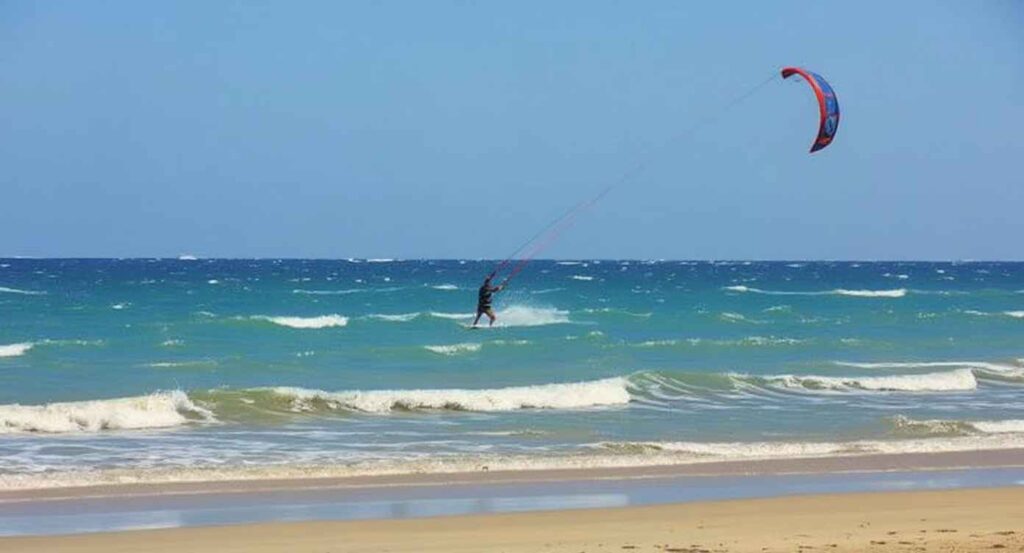
Winds along this stretch of the Red Sea are generally steady and predictable, with cross-shore or side-onshore directions. The main kitesurfing season runs from April through October, when the wind is most reliable, but there are suitable days outside this window as well.
Taking a boat trip to Qulaan Islands
Another coastal gem is the Qulaan Mangrove Forest beach, sometimes called the Hamata Islands. Located about 100 km south of Marsa Alam (and just north of Hamata village).
Qulaan consists of four small sandy empty islands ringed by clear shallow waters, with mangrove trees sprouting right out of the saltwater.
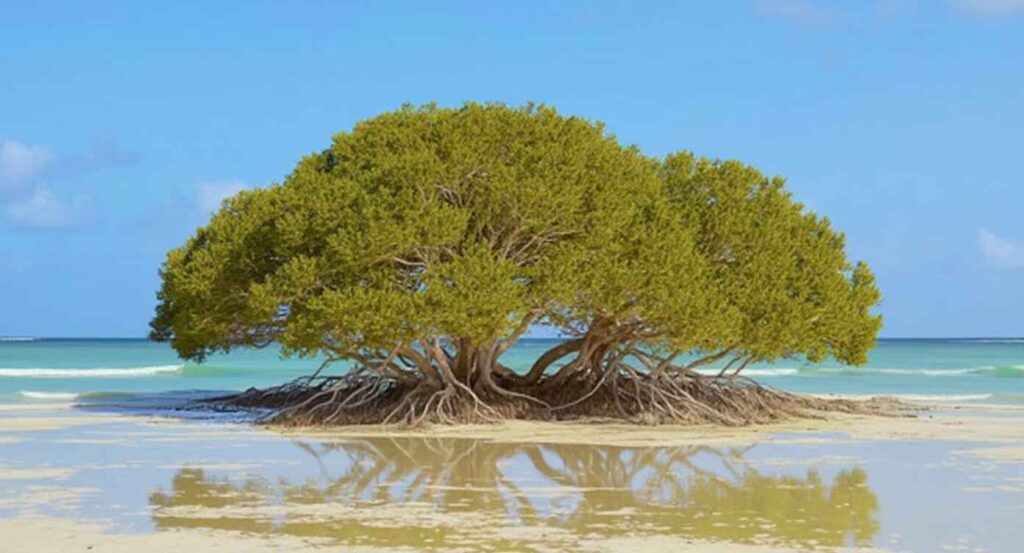
You can wade, swim, or kayak in the calm lagoon and observe small fish and crabs sheltering among mangrove roots. Qulaan is also a birdwatcher’s haven: keep an eye out for herons and even flamingos feeding in the wetlands.
The Dugong Reality: Abu Dabbab Decoded
Everyone talks about dugongs at Abu Dabbab. But after talking to dozens of divers and guides, here’s what actually matters
Tip
The dugongs feed on seagrass beds, and you need to give yourself plenty of time in and around the water. But “plenty of time” means something specific. Most day trips give you 2-3 hours. That’s not enough.
The dugongs here follow patterns that locals have observed for years:
- Morning feeding: 6:30-8:30 AM when the bay is calm
- Afternoon return: 4:00-6:00 PM as day boats leave
- Weather dependent: Rough seas push them deeper or to other bays
There’s only one dive center directly at Abu Dabbab beach – Blue Ocean. This matters because you can enter the water multiple times throughout the day instead of being locked into a single dive window with boat operators.
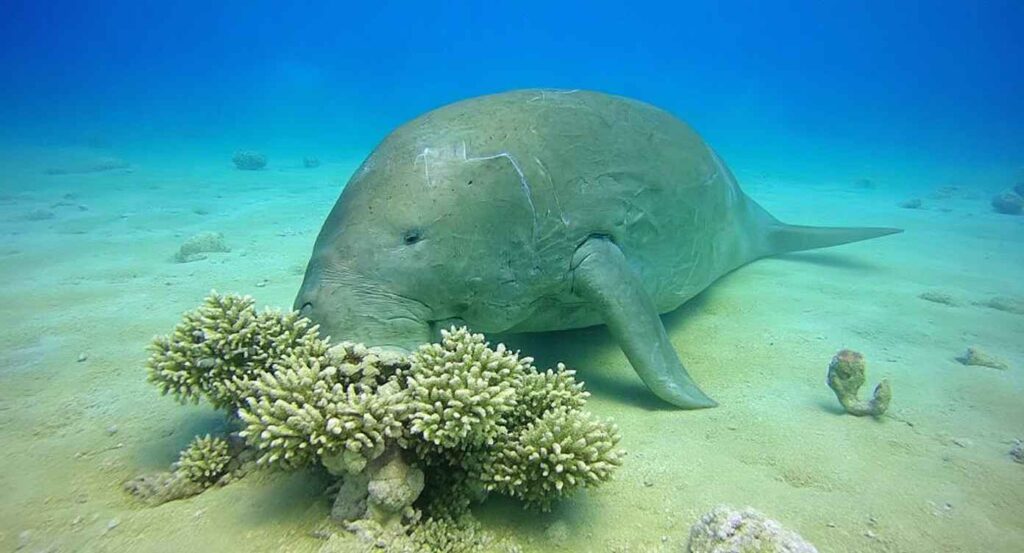
The real secret? Stay at Abu Dabbab Lodge or nearby accommodations. Wake up, walk to the water, and spend the entire morning floating over the seagrass beds.
You must maintain at least 2 meters distance from any turtle or dugong at all times, this is Egyptian Law no 102 of 1983, but more importantly, getting too close makes them disappear.
What dugong encounters actually look like
They’re massive (up to 3 meters long) but move slowly. When feeding, they create small clouds of sand. You’ll hear them breathing at the surface – a distinctive whoosh sound. They’re curious but shy. If you stay still and let them approach, encounters can last 10-15 minutes.
The Green Turtle Phenomenon
Abu Dabbab has vibrant coral reefs and extensive seagrass meadows that attract many marine creatures, but the green turtles here are different from anywhere else in the Red Sea.
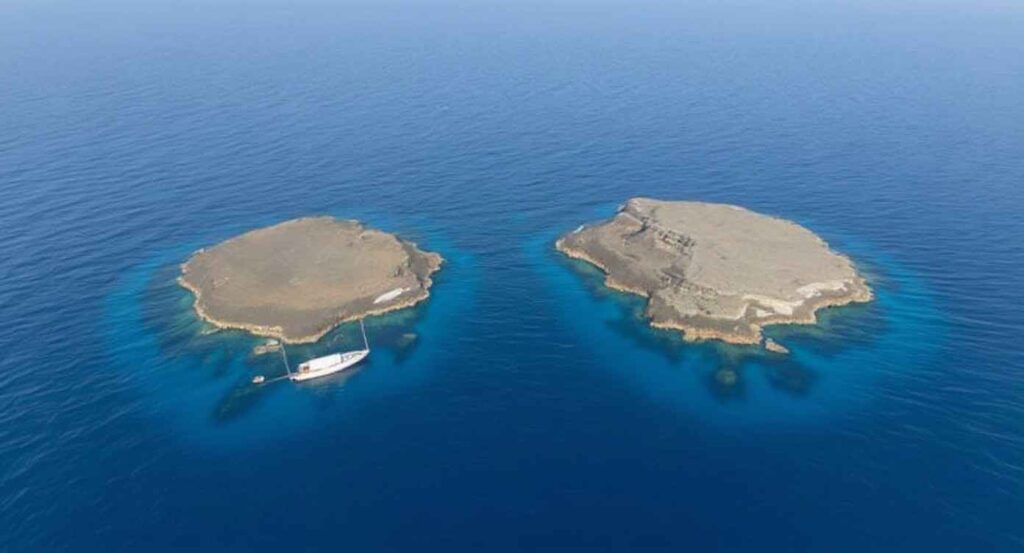
These aren’t the shy, quick-to-flee turtles you find at other sites. The Abu Dabbab population has become habituated to humans over decades of respectful interaction. Individual turtles can be recognized by their markings – locals have names for the regulars.
The morning turtle routine
Between 7-9 AM, large greens emerge from deeper water to graze on the seagrass. They’ll often surface for air just meters from snorkelers. The biggest individuals – some with shells over a meter wide – tend to stay in the deeper sections of the bay, around 8-12 meters.
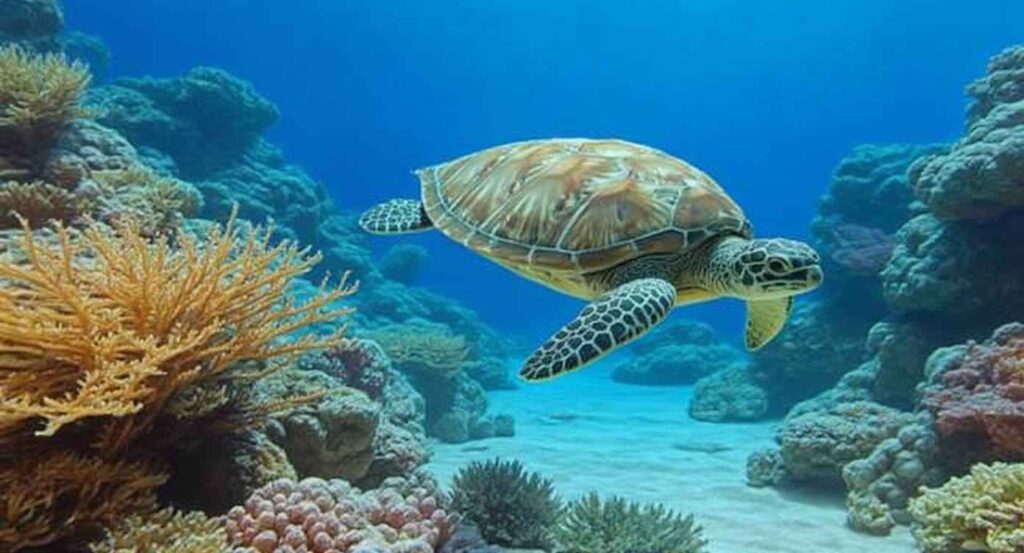
Hawksbill vs Green identification
Both Green Turtles and Hawksbill Turtles are present. Greens have rounded heads and feed on seagrass. Hawksbills have pointed beaks and prefer the coral sections on the bay’s edges. The hawksbills are more skittish and usually found in the coral areas rather than over sand.
Elphinstone: The Shark Reality Check
Every diving guide mentions Elphinstone’s sharks. But the reality has changed significantly in recent years.
Local divers report that oceanic whitetip sharks (longimanus) are now rarely seen at the site in 2023/24, likely due to the number of dive boats – sometimes a dozen boats and dozens of zodiacs.
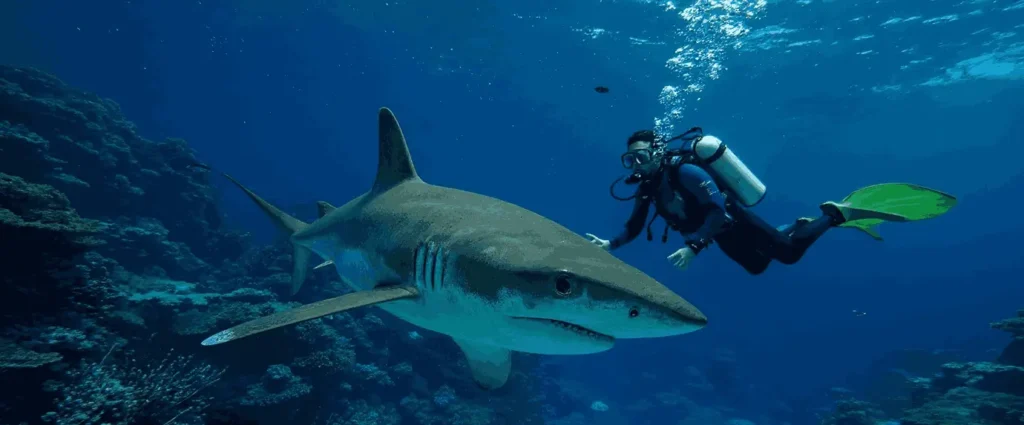
But here’s what’s still working:
- Seasonal shark patterns: From October to December, oceanic white tip sharks surrounded by pilot fish roam around the southern plateau at shallow depth, making them visible during safety stops.
- Early departure advantage: Boats leaving at 5:30 AM from the port have the best chance of encountering sharks before the site gets crowded. The morning light hitting the plateau creates perfect conditions for photography.
- The south plateau strategy: Dropping onto the south plateau close to the reef, you’re likely to come face to face with an Oceanic Whitetip shark, and the deep part, covered with brown soft corals, hosts swarms of anthias.
- Experience requirements: Elphinstone requires AOWD level certification and at least 50 logged dives. The currents can be unpredictable, and the site drops to over 800 meters.
The Northern Sites: Where Locals Go
Beyond Abu Dabbab and Elphinstone, Marsa Alam’s northern bays hold secrets that most tourists miss:
Marsa Mubarak: Similar seagrass beds to Abu Dabbab but with different topography. The dugongs here are often more relaxed because there’s less boat traffic. Best accessed by staying at resorts north of town.
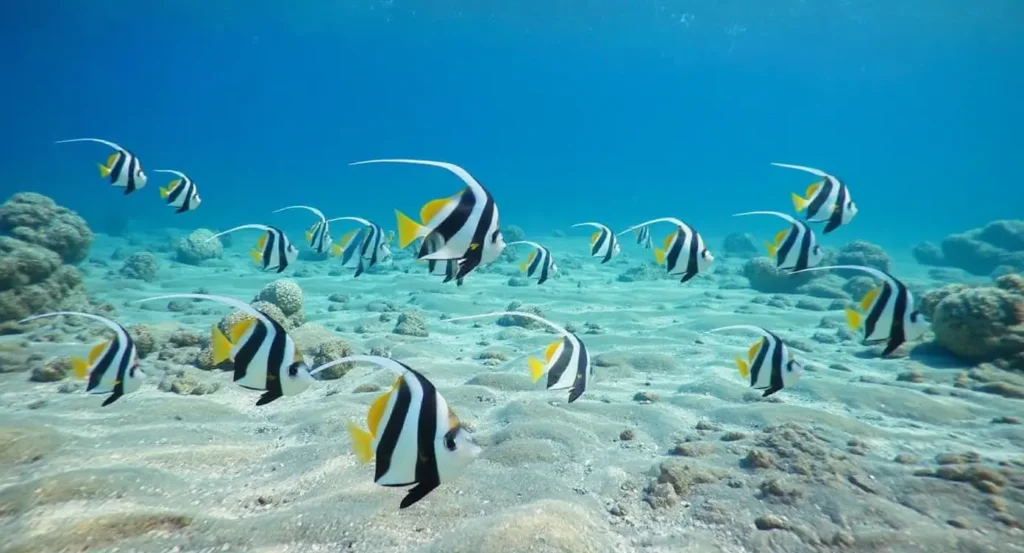
Marsa Shoona: Almost unknown to day-trippers. Pristine coral gardens with massive table corals. The house reef here rivals anything in the southern Red Sea.
Wadi Gimal: Part of the national park, this protected bay has some of the healthiest coral formations in Egypt. Permit required, but worth the bureaucracy.
Accommodation Strategy: Location Matters
Your hotel choice determines your marine life encounters more than any other factor.
Abu Dabbab area (30km north of town):
- Direct access to the dugong site
- Blue Ocean dive center on-site
- Less nightlife but better marine access
- Abu Dabbab Lodge: Basic but right on the beach
- Mövenpick Resort: Luxury option with house reef
Marsa Alam town center:
- Better restaurants and local culture
- Need transport to the best dive sites
- More budget accommodation options
- Good for land-based activities
Port Ghalib (60km south):
- Upscale resort area with marina
- Further from Abu Dabbab (45-minute drive)
- Better for reef diving than dugong encounters
- Multiple resort choices with house reefs
The overlooked option: Stay in town but book accommodation packages that include unlimited shore diving at Abu Dabbab. Several local operators offer 3-day, 5-day packages that include transport, equipment, and guide services.
Diving Operators: The Real Differences
Not all dive centers in Marsa Alam offer the same experience:
Blue Ocean (Abu Dabbab): The only operator with direct beach access to the dugong site. Small groups, local guides who know individual animals. Equipment quality varies, but the location advantage is huge.
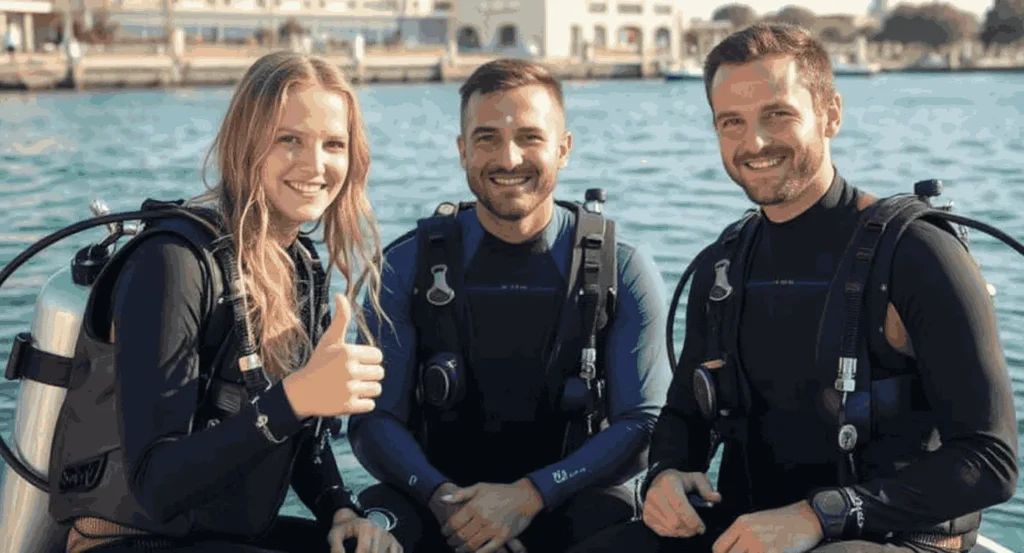
Sea Scope (Port Ghalib): Large operation with newer equipment and boats. Better for Elphinstone trips, but less personal service. Good safety record.
Emperor Divers (various locations): International standards, English-speaking guides, higher costs but reliable quality.
Local boat operators: Much cheaper but variable quality. Good for experienced divers who know what they want. Bargaining expected.
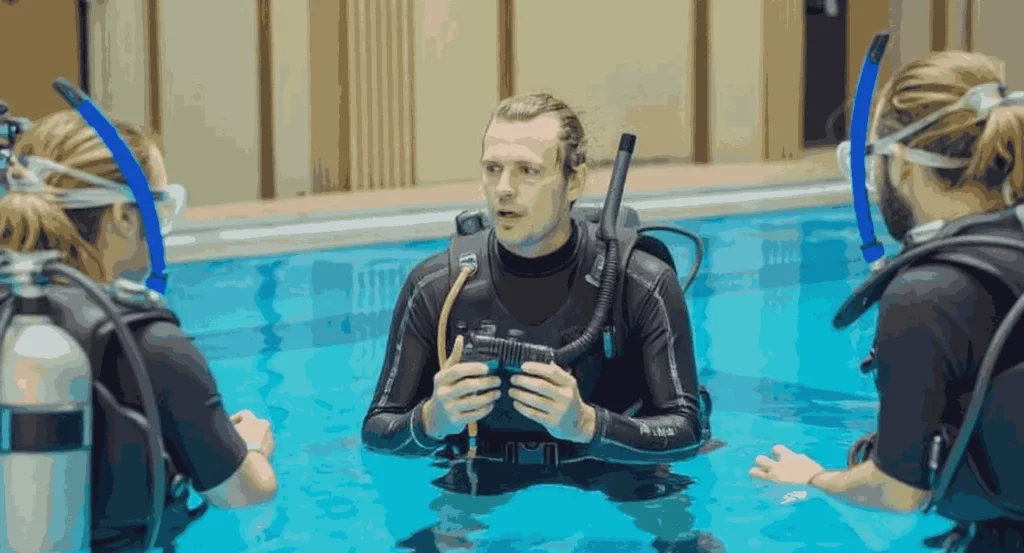
The critical difference: Operators based at Abu Dabbab can offer unlimited shore diving. Boat-based operators lock you into scheduled trips with fixed bottom times.
Seasonal Patterns That Matter
March-May: Water temperatures 24-26°C, excellent visibility, peak dugong activity. This is the best time for Abu Dabbab encounters.
June-August: Hottest period (35-40°C air temperature), but warmest water (28-30°C). Fewer crowds, better prices, but some operators reduce schedules.
September-November: Perfect temperatures (26-30°C air), prime time for oceanic whitetip sharks at Elphinstone from October to December. Most consistent weather.
December-February: Cooler air (20-25°C), occasional wind, but still excellent diving conditions. Water temperature drops to 22-24°C.
The wind factor: Marsa Alam faces northeast, so winter winds can make boat trips uncomfortable. Shore diving at Abu Dabbab remains calm due to the bay’s protection.
Food and Culture: Beyond Resort Buffets
Local fishing village experience: The small harbor north of town serves the day’s catch grilled with minimal seasoning. Ask for “samak mashwi” (grilled fish) and specify you want whatever was caught that morning.
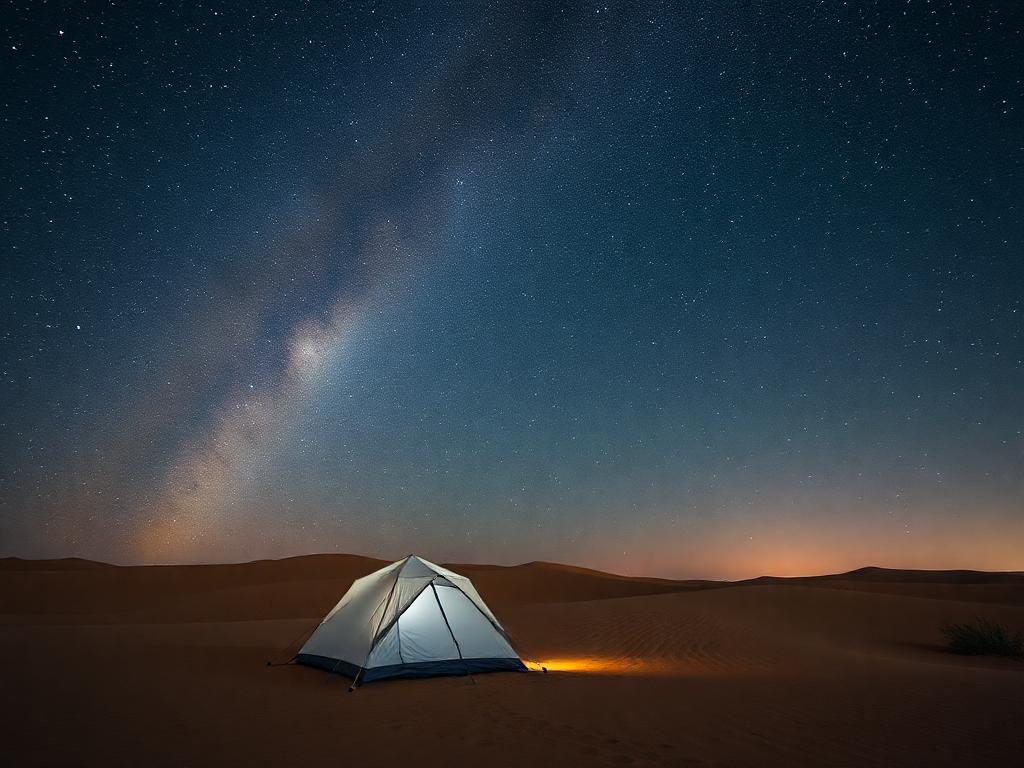
Bedouin desert camps: Several operators offer overnight desert experiences with traditional meals. The stargazing here ranks among the world’s best due to zero light pollution.
Market reality: The town market is small but authentic. Best items: dates, spices, and traditional textiles. Bargaining is expected but not aggressive like tourist markets elsewhere in Egypt.
What Changes Everything
The difference between a good Marsa Alam trip and an extraordinary one comes down to three decisions:
- Stay near Abu Dabbab, not in town or Port Ghalib. The extra cost pays for itself in marine encounters.
- Plan for multiple water entries per day, not single scheduled dives. Dugongs and turtles don’t follow dive schedules.
- Visit during shoulder seasons (March-May or September-November) when the weather is stable and marine life is most active.
Everything else (the specific resort, dive operator, or daily schedule) matters less than these fundamental choices about location and timing.
This isn’t a destination you visit once and check off a list. The marine life encounters here create addiction. Most people start planning their return before they leave Egypt.

